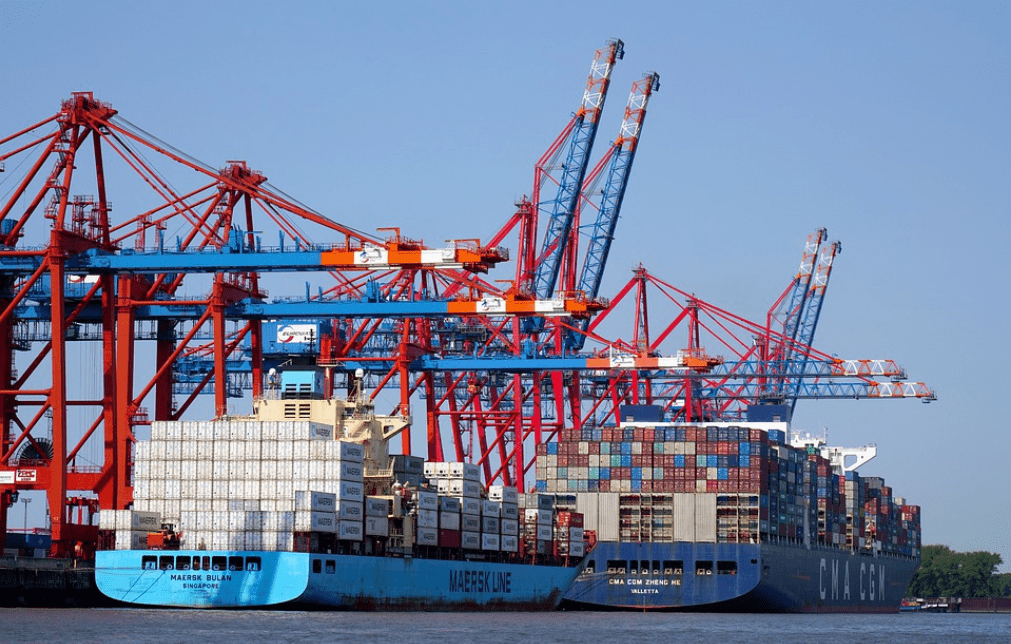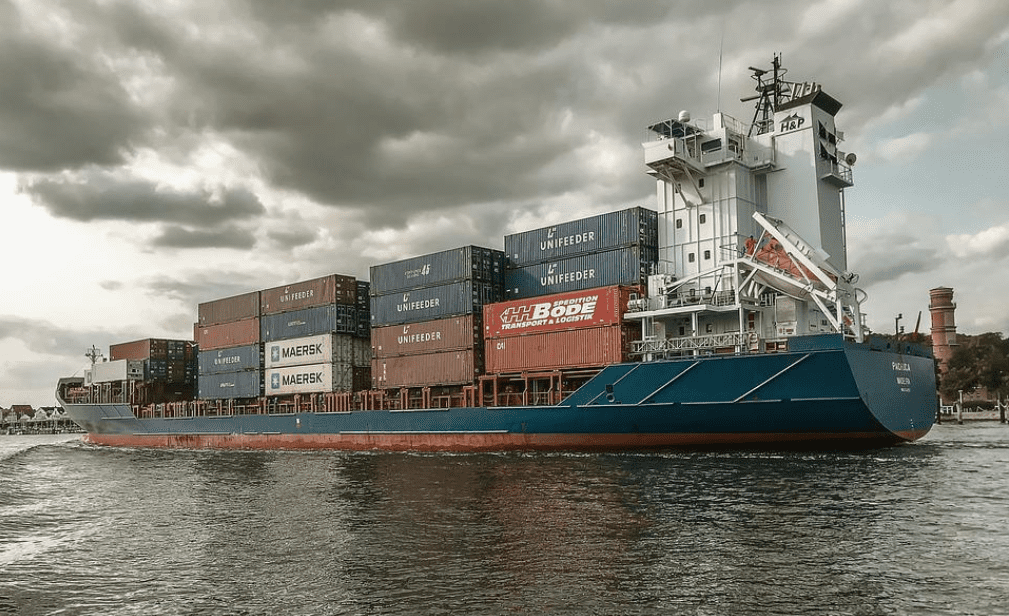Close
Close

What is Supply Chain Sustainability? This is a question that many people are asking, and for a good reason. The definition of supply chain sustainability can be a little unclear, but generally, it refers to optimizing resources while also increasing ROI. In other words, it's about looking for ways to make our businesses more viable without sacrificing profits.
Sustainable supply chains are put into practice right from obtainment to delivery, with all team members working together towards the goal of achieving a healthy planet for future generations. It's not just about ensuring that our products are environmentally friendly – it's also about lessening waste and maximizing efficiency throughout the process.
Enterprises are beginning to see the value of supply chain sustainability, and many are implementing strategies designed to make their supply chains greener. Moxe Consulting's services can help your business do just that. We offer a variety of mixtures that will help you make your supply chains more sustainable and efficient – so why not give us a try?

Supply chain sustainability has many advantages, and they stretch across various areas. For starters, sustainable practices can help companies save money on operational prices. This is because waste is lowered when using digital technologies in the supply chain. Moreover, better management and control of resources leads to increased efficiency and productivity.
Another benefit of supply chain sustainability is purchaser loyalty. When consumers know that a company takes its social responsibility seriously by implementing sustainable measures throughout its operation, they are more likely to remain loyal even during tough times. And as we've seen in the latest weeks with the pandemic, public opinion can significantly impact businesses--especially those with questionable ethical standards or environmental track records.
In this age where information travels at the speed of light, it's easier for consumers to look out about a company's sustainability policies (or lack thereof) thanks to social media. As such, businesses that want to stay ahead of the competition should think about implementing Supply Chain Sustainability practices as soon as possible. Not only will it make them look better in the eyes of consumers, but it'll also help lessen the risk and vulnerability from potential disasters like the pandemic we're currently experiencing.
For a company to have sustainable supply chain management, it is valuable that they adhere to three requirements. The first of these is improving social impact. The company must develop a measurable aim to gauge its positive social effect.
The second requirement has fair working practices and Health & Safety regulations. It's essential that all employers are treated fairly and safely to maintain a sustainable supply chain. The third and final requirement is correct to supply chain sustainability. This means that everyone in the company must work towards the same aim to build a more equitable business model.
One-way companies can achieve this aim is by appealing to millennials. A current study has shown that this generation places a premium on corporate social responsibility, such as sustainability. In fact, they're eager to pay more for products from companies that share their values!
There are a lot of reasons why supply chain sustainability is important. First and foremost, it helps to upgrade efficiency within the supply chain. Inefficient systems can lead to several issues, including environmental impact, wasted resources, and missed opportunities for cost savings and revenue growth.
Sustainability in the supply chain is key for overall productivity and price optimization. When all parts of the supply chain work together accurately, businesses can save money while reducing their environmental impact. This is better for both the bottom line and the planet.
In addition, sustainable practices can help companies construct better relationships with their suppliers and create win-win business opportunities. By working jointly towards common sustainability goals, businesses can create a more collaborative environment that benefits everyone involved.
Lastly, implementing sustainable practices often leads to better CSR activities. Corporate social responsibility (CSR) is an important part of any company's strategy, and sustainable practices make it uncomplicated to act responsibly towards employees, customers, and communities worldwide.
When it comes to supply chain sustainability, many companies are still in the early stages of understanding and implementing these practices. However, many noteworthy successes have come about due to this movement.
One such success is the reduction in carbon emissions by 3.5 million tons. This was accomplished through a collaboration in the middle of consumers and suppliers. In total, $1.3 million has been saved per initiative by suppliers, thanks to work done by customers in this area.
One more example can be seen with Campbell Soup Company and the Environmental Defense Fund (EDF). The two organizations teamed up to help farmers implement sustainable practices that would lessen their environmental impact. These added technologies, guidelines, and products would help optimize fertilizer use and improve soil conservation.
Thanks to digital technology, companies can now assist large numbers of suppliers more effectively than ever before. And as awareness around supply chain sustainability grows, even more companies will likely join in these efforts to lessen their environmental impact.
Walmart is using its Sustainability Index to help suppliers grow their products' sustainability to lower costs and improve quality for Walmart customers. As part of this program, Walmart pledges that 70% of its goods will come from sustainable suppliers by the end of 2027.
Levi Strauss has a program that provides low-interest short-term financing for suppliers who want to become more environmentally sustainable. Levi Strauss also fires up their supplier networks to become involved in sustainability efforts, but the company remains focused on its mission.
These examples show that there are many ways for companies to get involved in and benefit from supply chain sustainability initiatives. And as awareness of these issues continues to grow, even more successes will likely be seen in the years ahead.

When it comes to supply chain sustainability, many companies struggle with how to measure their success. After all, the aim of sustainable supply chain management is to have a minimal negative impact on the environment and society as a whole. While this may be hard to quantify, businesses can take some steps to develop measurable goals for social sustainability.
One important factor when measuring social sustainability is your company's social impact. This can be determined by looking at factors such as how much you contribute to positive change or if your business is helping reduce poverty or inequality. Moreover, setting measurable goals for improving your environmental and social performance is important. This could involve lowering greenhouse gas emissions, implementing fair labor practices, or meeting Health & Safety regulations.
True supply chain sustainability also needs a diverse range of suppliers in your rotation. This helps promote equitable business practices and lessens any potential negative impacts from doing business with a limited number of vendors. Lastly, another way to gauge success is by looking at how millennials view your company's corporate social responsibility (CSR). A majority of millennials are willing to pay more for products that share their values, so it's essential that companies take steps to avoid losing out on this valuable market segment.
Implementing supply chain sustainability can be a real challenge for companies. Various environmental, social, and economic problems must be considered when making this decision. The tremendous diversity of products means that companies should account for the specific circumstances of each product type to succeed.
One more big challenge is that many organizations don't even know where to start when it comes to implementing these practices. Some organizations provide metrics and tools to help companies find important sustainability issues in their supply chains and a reporting system to highlight critical hot spots. However, the most important challenge is still recognizing the hotspots to address them properly.
Despite these challenges, there are ways to deal with them. WWF has developed a list of 50 performance indicators that can help spot the risks associated with production and how likely and severe those risks are. This information can provide a good starting point for companies who want to start reducing their negative impact on the environment. Additionally, CDP and GRI have created metrics for comparing different types of sustainability impact, giving businesses another way of measuring their progress towards sustainable operations.
Achieving supply chain sustainability goals can be difficult, but it's not impossible. Here are a few of the challenges that you might face:
Enterprises must take a few important steps to build a sustainable supply chain. The first step is identifying and fixing issues in its supply chain management. Once these issues have been identified, the enterprise needs to develop a plan of action and put it into effect. This plan should involve training and capacity-building programs so that the necessary behavioral changes can be brought about throughout the supply chain. In addition, the enterprise should set up a code of conduct for its suppliers and carry out regular supplier audits to evaluate them properly.